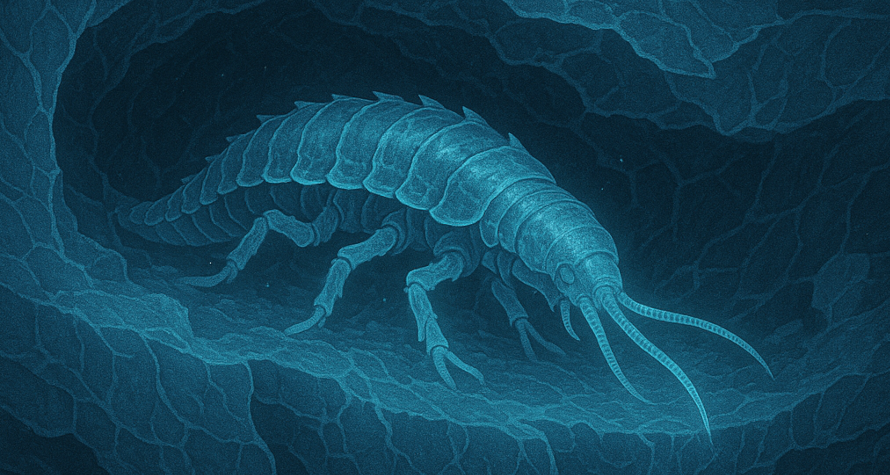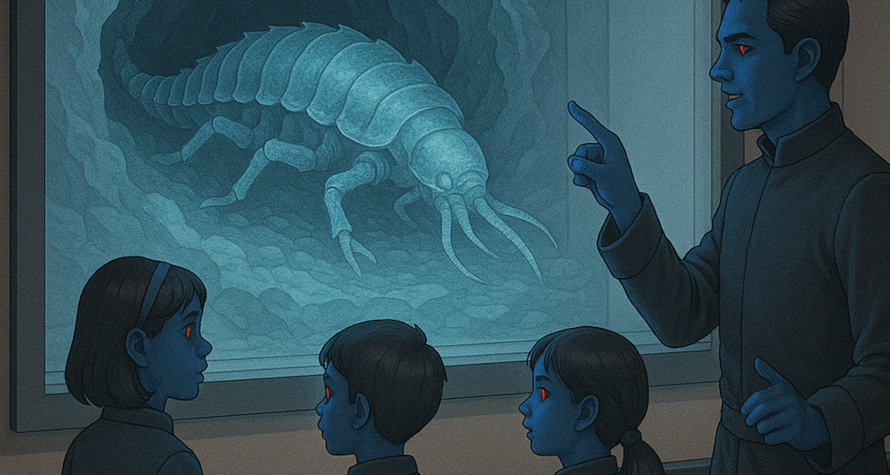Ice-Borers: The Engineers Beneath Our Feet
Ascendant Sciences Dispatch
Csilla Sector, Civil Sciences Division
“ICE-BORERS: THE ENGINEERS BENEATH OUR FEET”
By Senior Correspondent T’sil’anor’ethvi
“In the silence beneath Csilla’s glacial mantle, a lifeform thrives — patient, blind, and essential. The Ice-borer is not merely a creature. It is a keystone species in the grand design of our subterranean world.”

Ice-borer in natural habitat…
Profile of the Ice-Borer (Subglacium vorathen)
Native to the mid-shelf strata of Csilla’s polar glaciers, Ice-borers are subterranean arthropodal lifeforms, averaging 1.5 meters in length and coated in segmented cryo-ceramic exoskeletons. Long considered a curiosity by early Chiss settlers, these organisms are now recognized for their pivotal role in shaping subterranean habitats and influencing thermal flow.
“They are biological excavators,” explains Dr. Thrask’venol’ari, glaciobiologist of the Chiss Science Corps. “Their movement fractures and redistributes glacial mass in stable patterns — ideal for long-term tunneling.”
Sensory Adaptation
Blind from birth, Ice-borers navigate using vibrational mapping, detecting minute changes in density and acoustic feedback. Their antennae — highly evolved neural spines — allow them to “see” the world through sound and tremor. Their paths often anticipate geothermal faults and mineral-rich layers, making them living indicators of natural resource concentrations.
Biotech Applications & Domestication Efforts
Over the past seventy cycles, select strains of Ice-borers have been studied and bio-engineered by the Chiss Expansionary Defense Force (CEDF) and Ascendancy Infrastructure Corps. While full domestication remains elusive, pilot programs have successfully influenced migration paths using vibration lures and thermal beacons.
“It is not that they are unintelligent,” notes Engineer Kest’voro’nal, “but their awareness is so alien that traditional conditioning proves ineffective. We must communicate on their terms — with movement, with silence, with patience.”
Environmental Guardians
Crucially, Ice-borers maintain subglacial circulation, preventing structural collapses and ice saturation near geothermal pockets. Without them, thermal venting could destabilize key strata. As such, they are now classified as a Class-B Protected Organism under Ascendancy law.
In the Classroom
The Csilla Education Directorate has begun distributing interactive holomodels of Ice-borer anatomy and behavior to secondary science academies. Educators report increased interest in glaciobiology and subterranean engineering fields.
“For young Chiss, the Ice-borer represents the values we revere,” says Instructor Sirri’cora’nys. “Discipline. Precision. Endurance in the dark.”

Family viewing Ice-borer exhibit at Csaplar Natural Sciences Museum…
For further educational materials, consult Volume 12 of “Life Beneath the Ice: Fauna of the Inner Crust,” available through the Csilla Central Archive.






